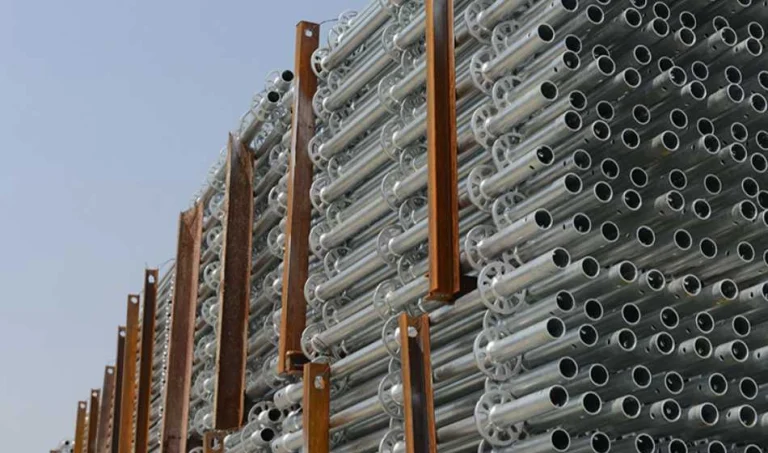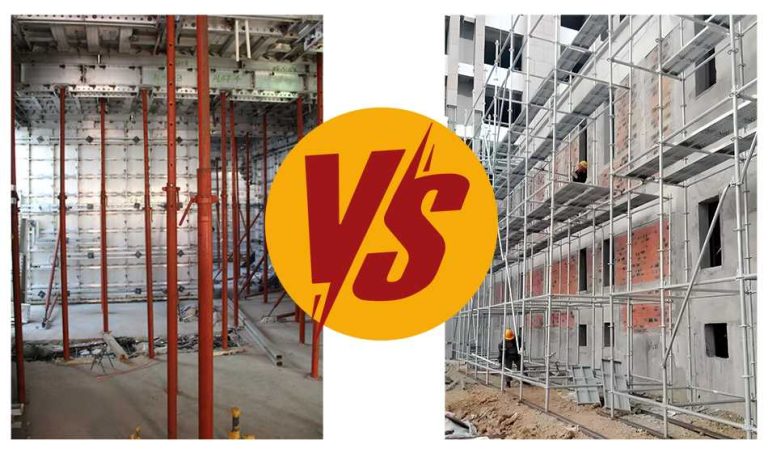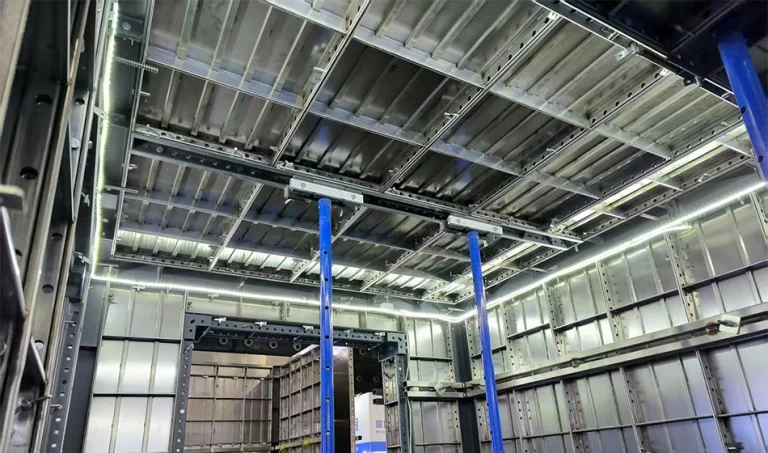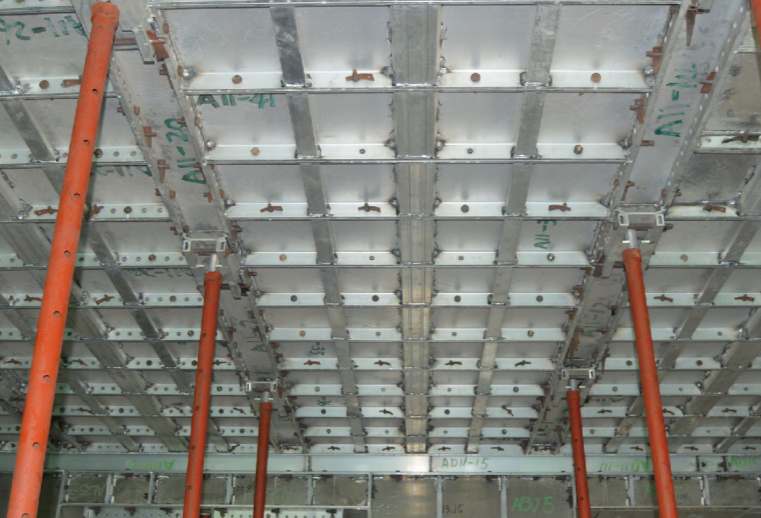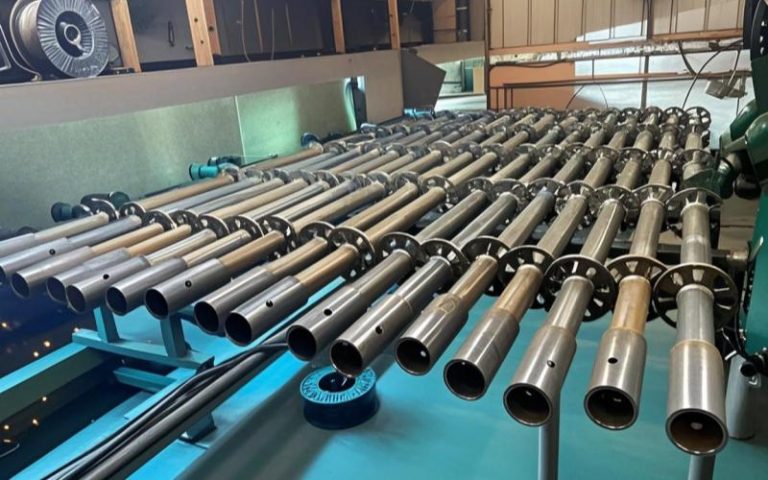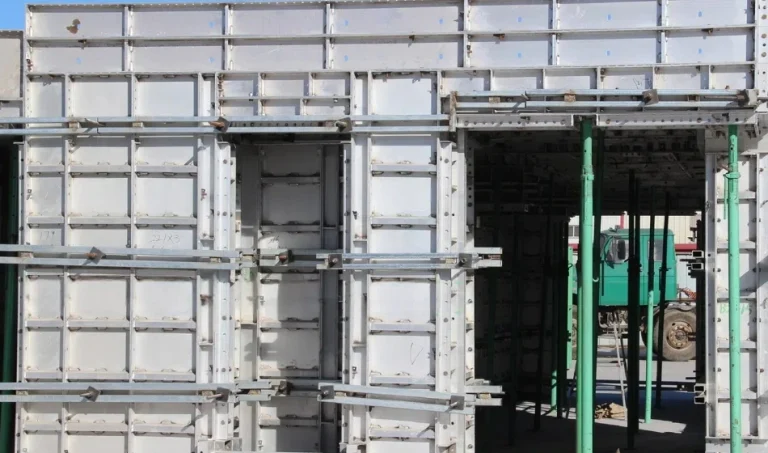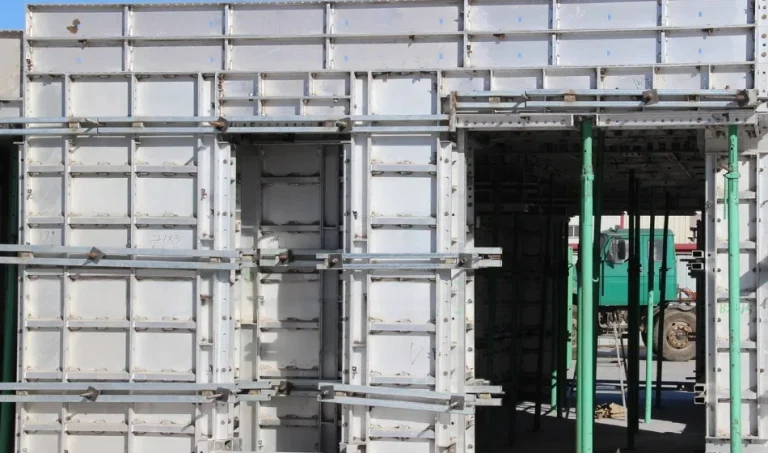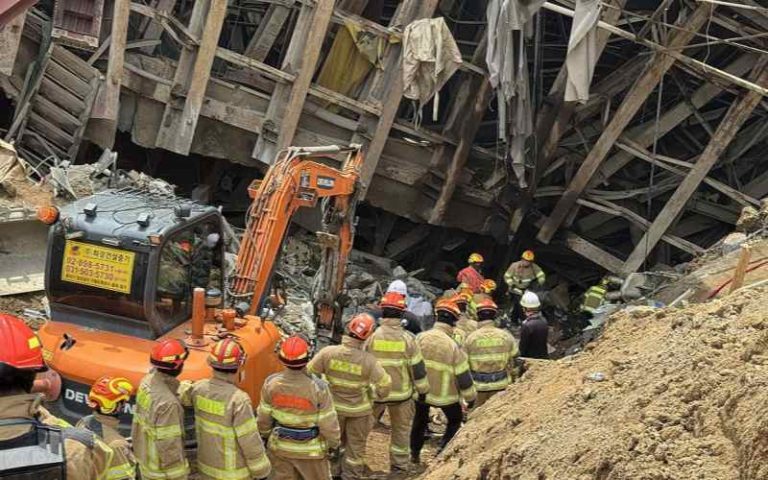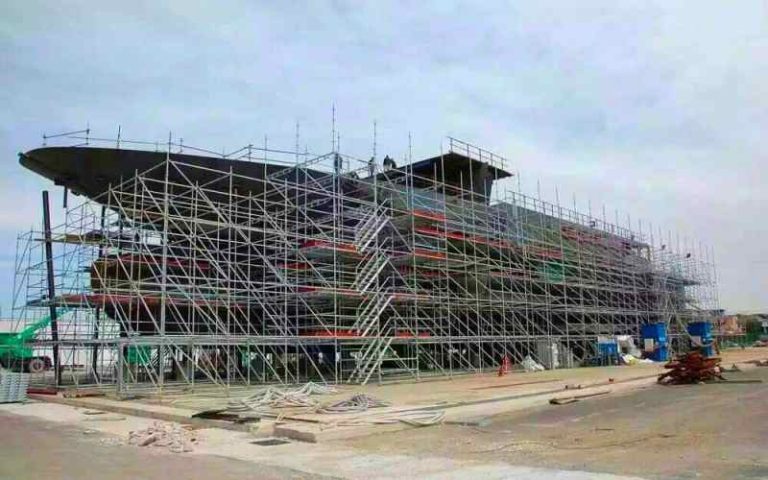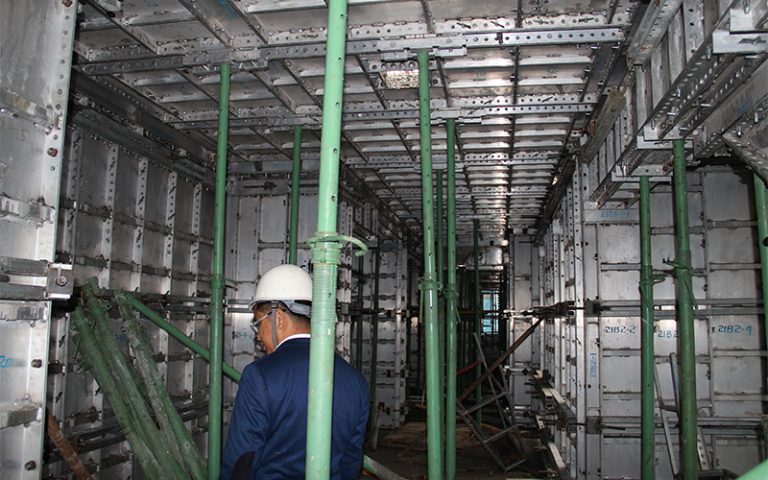What Makes a Formwork System Cost-Effective in Building Construction?
Key Factors That Influence the Overall Cost of Formwork
The cost-effectiveness of a formwork system in building construction depends on several connected aspects. These include the starting price of materials, labor costs, installation time, and the option to reuse the system. A cheaper system might look attractive initially. However, it can lead to higher expenses over time due to a shorter lifespan or increased labor demands. On the other hand, a larger upfront payment for a more durable system can result in meaningful savings through multiple uses.
Choosing the right material is a key factor. Timber, steel, aluminum, and plastic each come with different costs and performance features. Also, transportation and storage needs affect expenses. For instance, heavier systems like steel require stronger equipment to move. This adds to project costs.
How Labor, Material, and Reusability Affect Budget Planning
Labor often makes up a large portion of construction costs. Systems that are light and simple to assemble can reduce the number of workers needed. They also speed up project schedules. After years of practical refinements, we have created a clear and efficient formwork setup process. This reliable method reduces errors. It also cuts down on the time workers spend on-site.
The ability to reuse materials is another major consideration. Systems that stay strong through many uses provide better value. For example, timber may have a low starting price. However, its limited reuse makes it less cost-effective over time compared to metal options.
Comparing Initial Investment with Long-Term Savings
While making the selection of formwork systems for construction, there should be an effort not to simply look at the initial price. Steel and aluminum systems are expensive to begin with. But they offer high reuse value and are stronger. Whether you need the light yet dependable Aluminum Formwork or the strong and dependable Steel Formwork, we have products for you. They minimize the need for repeated replacement and maintenance. This leads to massive savings in the long term.
Which Formwork Materials Deliver the Best Balance of Cost and Performance?
Timber Formwork: Affordable but Limited Lifespan
Advantages for Small-Scale Projects
Timber formwork remains a common choice for small or unique projects. Its low initial cost and ease of shaping on-site make it practical. It is especially useful for complex designs or tasks requiring only a few uses.
Challenges in Reuse and Maintenance
Timber, however, has notable drawbacks. It absorbs moisture quickly, which can cause warping or decay if not properly maintained. Its shorter lifespan compared to metal options makes it less suitable for large or repetitive projects.
Steel Formwork: High Strength at a Higher Price
Long-Term Value Through Reusability
Steel formwork provides outstanding strength and durability. It is perfect for heavy-duty tasks where load-bearing capacity is essential. Ideal for challenging projects needing stability, steel systems can be reused many times without losing their structural quality.
Handling and Transportation Considerations
The main limitation is its weight. Steel requires cranes or other equipment to move on-site. This increases handling expenses. Still, its ability to resist wear makes these costs worthwhile over time.
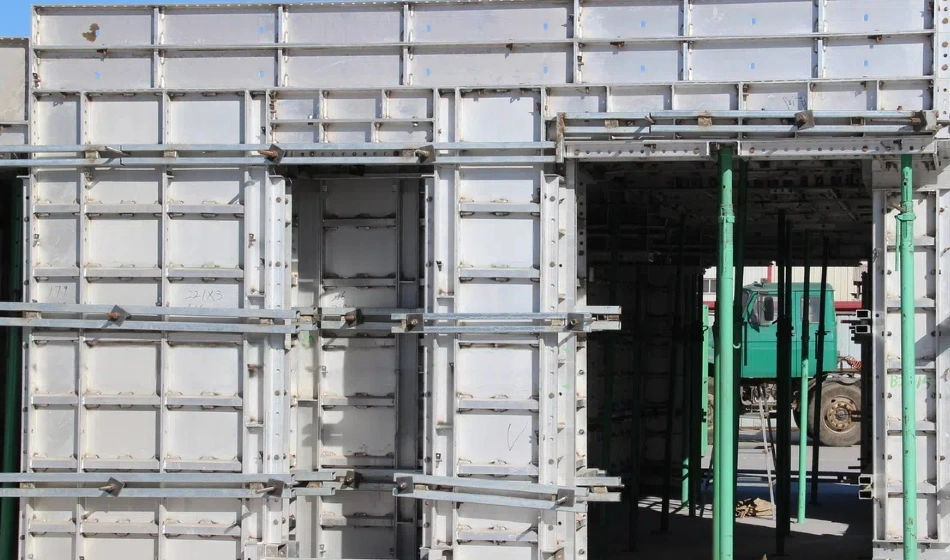
Aluminum Formwork: Lightweight Efficiency with Mid-Level Cost
Faster Installation Times
Aluminum offers a great balance between cost and performance. With solid strength and low weight, GOWE aluminum formwork is highly valued by workers for its ease of handling and flexibility. This simplicity leads to faster setup times. It also reduces the need for many workers.
Suitability for High-Rise Structures
Its precise manufacturing ensures consistent quality across multiple floors. This is a major advantage for tall buildings. The aluminum formwork system is a highly practical solution for RCC load-bearing and RCC-framed multi-story structures.
Plastic Formwork: Modular Design with Moderate Performance
Ease of Cleaning and Storage
Plastic formwork is becoming more popular due to its modular design and resistance to corrosion. It is easy to clean and store. These systems are especially useful in environments where water or chemicals might harm other materials.
Limitations in Complex Structures
Plastic, however, lacks the strength needed for heavy loads or intricate designs. It is best suited for simple structures with minimal customization needs.
How Does Performance Vary Across Different Building Construction Formwork Systems?
Load-Bearing Capacity and Structural Stability
Steel offers the highest load-bearing capacity among common formwork materials. Aluminum provides enough strength for most residential or commercial tasks while being easier to handle than steel. Timber struggles with stability under repeated use or high-pressure situations. Plastic performs well under moderate loads but falls short of metal systems in support strength.
Speed of Assembly and Disassembly on Site
Aluminum formwork excels in fast-paced environments due to its lightweight design. Through careful planning and customized production based on construction plans, GOWE minimizes issues before delivery to the site. This preparation reduces delays during setup. Steel takes longer to assemble due to its weight. However, it compensates with durability over many uses. Plastic modules are quick to put together but may not offer the precise fit of aluminum’s machined parts.
Durability Under Repeated Use and Harsh Conditions
Steel stands out for lasting through tough conditions, such as extreme weather or heavy use. Aluminum also shows strong durability with far less wear than timber or plastic over multiple cycles. Thanks to the exact tolerances of machined aluminum components, consistent shape, and surface quality are maintained across floors.
Why Choose GOWE for Your Building Construction Formwork Needs?
Our Approach to Balancing Cost and Performance
At GOWE, we offer customized solutions that align with budget limits and performance goals across various project sizes. We focus on designing formwork and providing on-site construction services led by experienced supervisors. Our expertise ensures safe, compliant installations completed on time with high efficiency. Trust GOWE to guide your construction success from start to finish.
GOWE Steel Formwork: Built for Strength and Longevity
Excellent Load Capacity for Heavy-Duty Applications
Our steel solutions are crafted for demanding environments where structural strength is critical. They are ideal when maximum load capacity is a priority.
Higher Initial Investment with Significant Lifecycle Value
While the starting cost may be higher than timber or plastic, our steel systems offer prolonged usability. This delivers excellent value over time.
Resistant to Warping, Fire, and Corrosion
These units resist deformation even in harsh conditions. This ensures reliable performance throughout their lifespan.
GOWE Aluminum Formwork: Lightweight Precision for Fast Builds
Reduced Labor Costs Due to Easier Handling
GOWE’s aluminum solutions greatly reduce the installation effort. Their low weight and high strength make them easy to handle.
Highly Reusable with Minimal Wear Over Time
Our aluminum formwork can withstand 60KN/m² concrete side pressure. It can also be dismantled early for horizontal structures.
Best Fit for Large-Scale or Repetitive Projects
Precise manufacturing ensures uniformity across repeated uses. This makes it perfect for high-rise projects needing speed and quality.
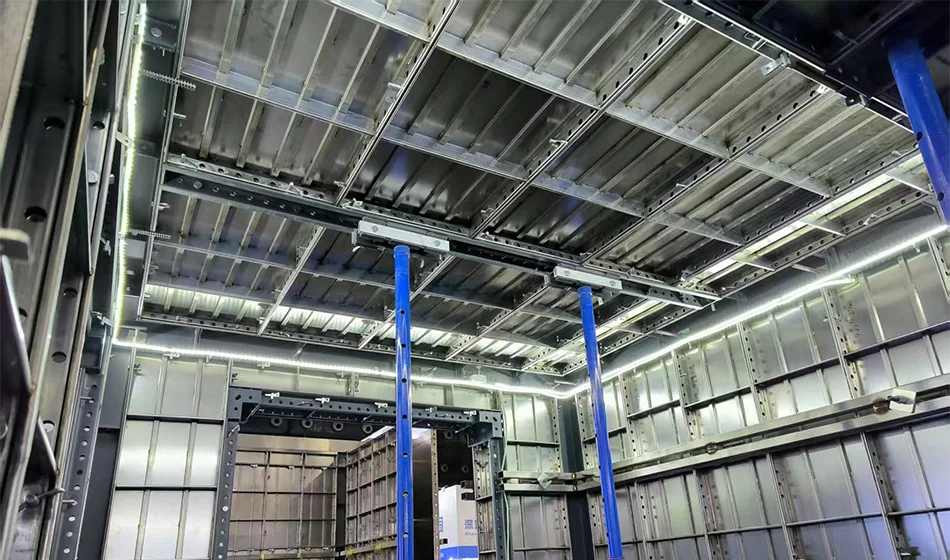
GOWE Table Formwork: Safe, Fast, and Cost-Effective
Table formwork refers to a scaffolding unit designed to be lifted to the next level and reused. This system avoids repetitive dismantling between floors. It improves productivity while maintaining alignment accuracy during vertical construction phases.
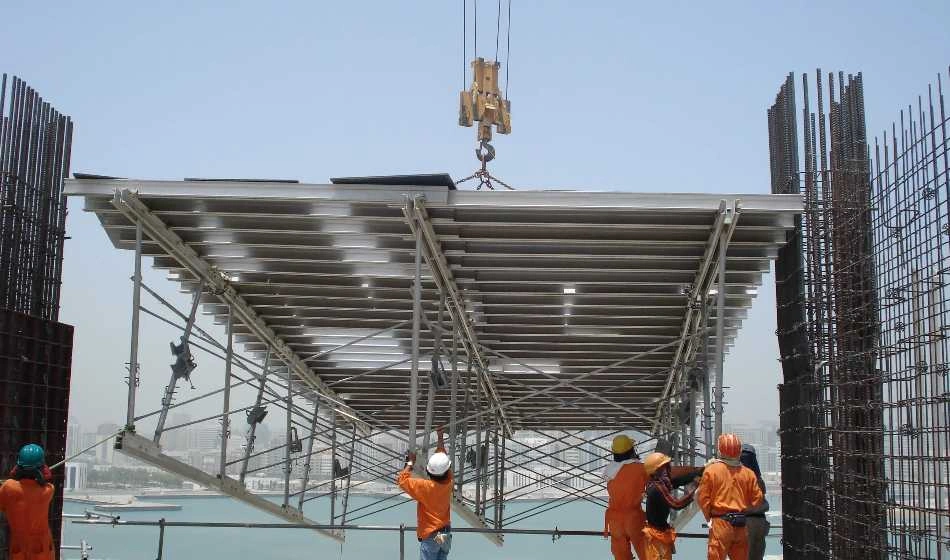
FAQ
Q: What is the most economical formwork for a residential building?
A: Aluminum formwork generally offers the best value for money. The most important considerations are its lightness, ability to be reused, and simplicity in putting up the structure. These make it very appropriate for multi-story residential buildings.
Q: How many cycles does a typical metal formwork system last?
A: Steel can be reused over 100 times. Aluminum systems generally sustain 250-300 cycles with no significant deterioration.
Q: Is plastic formwork suitable for large commercial buildings?
A: Plastic systems are not ideal for large commercial buildings since they have less load-carrying capacity. They are better suited for smaller or temporary projects with simple details.
Q: What are the considerations in choosing between timber and aluminum?
A: Consider project size, rate of repetition, labor availability, environmental conditions (e.g., humidity), desired finish quality, and budget constraints. Give precedence to long-term return on investment compared to initial cost.
Q: How does prefabricated formwork improve project timetables
A: Prefabricated systems, like those from GOWE, reduce on-site Adjustments. Precise fits taken from design drawings remove errors and speed up the entire construction process.

